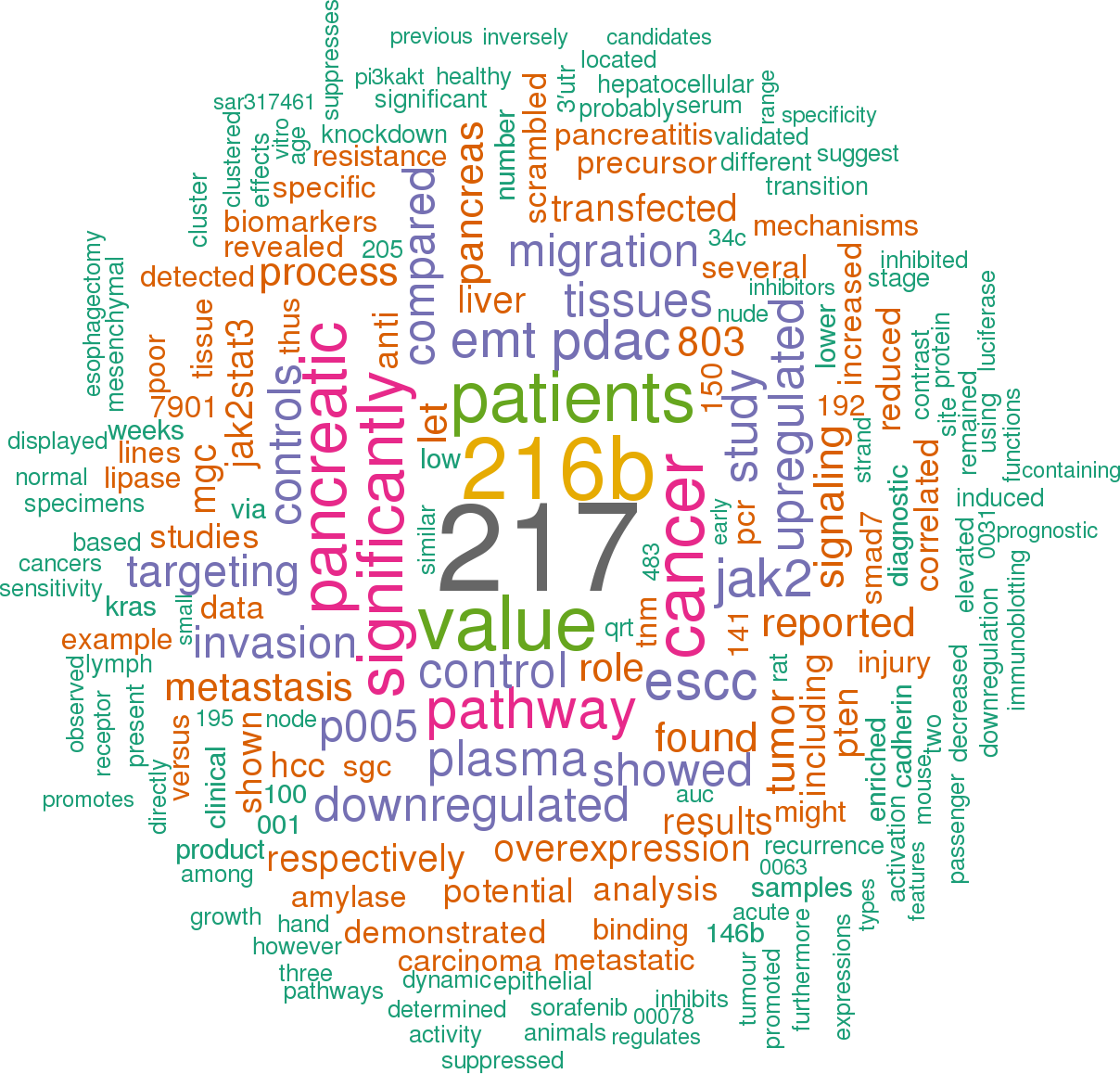Accession
MI0000292
Symbol
HGNC:
MIR216A
Description
Homo sapiens
hsa-mir-216a precursor miRNA mir-216
Gene
family?
family?
RF00654;
mir-216
Summary
Caution, this is an AI generated summary based on literature. This may have errors. ?
Hsa-mir-216a is a microRNA that is notably abundant in exosomes derived from KLEC, suggesting a potential role in cellular communication [PMC5570218]. This microRNA, along with others such as hsa-mir-217 and hsa-mir-133b, has been identified as closely associated with target differentially expressed mRNAs (DEmRNAs), indicating its involvement in gene regulation [PMC5565391]. In the context of pancreatic adenocarcinoma, hsa-mir-216a is one of the miRNAs that exhibited significant expression differences between tumor and normal tissue samples, highlighting its potential as a biomarker for disease state [PMC9669652]. Furthermore, evidence suggests that hsa-mir-216a may contribute to the progression of colorectal adenocarcinoma (COAD), adding to its significance in cancer biology [PMC6111604]. The gene functions influenced by hsa-mir-216a could be subject to regulation by microRNA interference mechanisms, as predicted by computational models like TargetScan [PMC5062913]. However, in papillary renal cell carcinoma (PRCC), the expression levels of hsa-mir-216a were found to be negatively associated with patient overall survival rates, suggesting a complex role in this cancer type [PMC6522832]. Additionally, a positive correlation between the upregulation of hsa-mir-216a and improved overall survival has been observed in other studies [PMC7499949].
Literature search

53 open access papers mention hsa-mir-216a
(299 sentences)
(299 sentences)
Sequence
100360
reads,
1014
reads per million, 36 experiments
gauggcugugaguuggcuUAAUCUCAGCUGGCAACUGUGAgauguucauacaaucccUCACAGUGGUCUCUGGGAUUAUgcuaaacagagcaauuuccuagcccucacga
((.(((((.((((((((.(((((((((..(((.((((((((.(((....)))....)))))))).))).))))))))).)))))..........))).))))).))....
((.(((((.((((((((.(((((((((..(((.((((((((.(((....)))....)))))))).))).))))))))).)))))..........))).))))).))....
Structure
---- u u ---------- u CU A ---a u
ga ggcug gag uuggc UAAUCUCAG GGC ACUGUGAg ugu c
|| ||||| ||| ||||| ||||||||| ||| |||||||| |||
cu ccgau cuu aaucg AUUAGGGUC CUG UGACACUc aca a
agca c c uaacgagaca U -U G ccua u
Annotation confidence
High
Do you think this miRNA is real?
Comments
This human miRNA was predicted by computational methods using conservation with mouse and Fugu rubripes sequences [1]. Expression of the excised miR has been validated in zebrafish, and the 5' end mapped by PCR. The mature sequence shown here represents the most commonly cloned form from large-scale cloning studies [2].
Genome context
chr2: 55988950-55989059 [-]
Clustered miRNAs
1 other miRNA is < 10 kb from hsa-mir-216a
| Name | Accession | Chromosome | Start | End | Strand | Confidence |
|---|
Disease association
hsa-mir-216a is associated with one or more human diseases in the Human microRNA Disease Database
| Disease | Description | Category | PubMed ID |
|---|
Mature hsa-miR-216a-5p
| Accession | MIMAT0000273 |
| Description | Homo sapiens hsa-miR-216a-5p mature miRNA |
| Sequence | 19 - UAAUCUCAGCUGGCAACUGUGA - 40 |
| Evidence |
experimental
cloned [2], SOLiD [3] |
| Database links |



|
| Predicted targets |


|
Mature hsa-miR-216a-3p
| Accession | MIMAT0022844 |
| Description | Homo sapiens hsa-miR-216a-3p mature miRNA |
| Sequence | 58 - UCACAGUGGUCUCUGGGAUUAU - 79 |
| Evidence |
experimental
SOLiD [3] |
References
|



